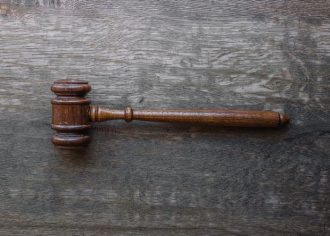
May 23, 2019
We Shall fight in the Fields and in the Streets, We Shall Fight in the Hills; We Shall Never Surrender.
In Papst Licensing GmbH & Co. KG v. Samsung Electronics America, Inc., [2018-1777] (May 23, 2019), the Federal Circuit affirmed the Patent Trial and Appeal Board’s determination that claims 1–38 and 43–45 of Papst’s U.S. Patent No. 9,189,437 are unpatentable for obviousness. The ‘437 patent, titled “Analog Data Generating and Processing Device Having a Multi-Use Automatic Processor” is directed to an interface device for communication between a data device (on one side of the inter-face) and a host computer (on the other).
The Federal Circuit noted that there were several other Inter Partes Reviews and corresponding appeals relevant to this proceeding. In particular, six weeks before the Board rendered its ’437 Patent Decision, the Board rendered final written decisions in two other IPRs (requested by Samsung among other petitioners) involving two other Papst-owned patents (U.S. Patent Nos. 8,966,144 and 8,504,746) which share a specification with the ’437 patent and contain claim terms related to those involved in the the appeal. While Papst initially appealed those decisions, it later voluntarily dismissed those appeals, which had the effect of making those decisions final.
The Federal Circuit noted that it has held that issue preclusion doctrine can apply to the Patent Trial and Appeal Board’s decision in an IPR once it becomes final. While there is an exception to the preclusion doctrine where the prior matter was of disparately low value compared to the current proceeding, the Federal Circuit found that this did not apply because Papst fully litigated the prior case up to the eve of oral argument, and did not avail itself of the opportunity to simply disclaim the claims, if they were not worth fighting for.
Upon examining whether issue preclusion did in fact apply, the Federal Circuit noted that the Board’s ruling in the prior decision was not just materially identical to the Board’s claim construction ruling in the present case, it was essential to that determination. The Federal Circuit thus concluded that issue preclusion therefore applies to the only two issues properly preserved for and presented on appeal, and affirmed the Board’s decision on that basis.
The Federal Circuit gratuitously continued, however, to confirm that Papst’s would have failed on the merits, even apart from issue preclusion, finding substantial evidence supported the Board’s decision.
Takeaway
The clear lesson taught by the Federal Circuit is that when dealing with multiple post grant proceedings on related patents — or at least patents with related claim elements — the parties must consider how the timing and manner of dropping portions of the proceedings might create issue preclusion. Winston Churchill once famously said:
We shall defend our island, whatever the cost may be, we shall fight on the beaches, we shall fight on the landing grounds, we shall fight in the fields and in the streets, we shall fight in the hills; we shall never surrender.
So, too, in patent disputes, sometimes, surrender is not an option.



































